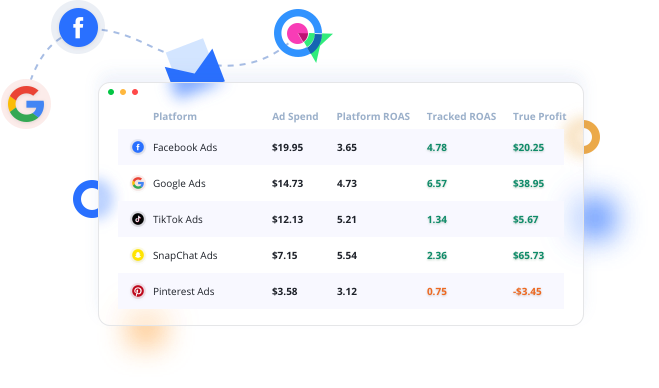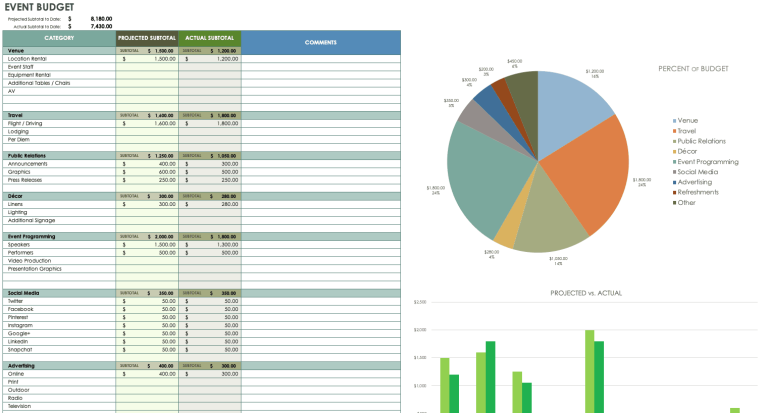
In the ever-evolving world of digital marketing, understanding which channels are driving results is crucial for businesses looking to optimize their strategies and maximize ROI. This is where attribution tracking comes into play. At its core, attribution tracking is a method used to identify and analyze the touchpoints that influence a customer’s journey from initial awareness to conversion. It goes beyond simple analytics by providing a comprehensive view of how different marketing efforts contribute to your business goals.
Attribution tracking is not just about tracking what happens—it’s about understanding why it happens. By capturing and connecting these touchpoints, businesses can gain valuable insights into which strategies are driving growth and which need recalibration. In this article, we will explore the importance of attribution tracking, how it works, and the benefits it brings to your marketing efforts.
What Is Attribution Tracking and Why It Matters
Attribution tracking is a process that identifies and analyzes the touchpoints influencing a desired outcome, such as a sale, lead conversion, or customer engagement. Unlike basic analytics, which may only show surface-level metrics, attribution tracking focuses on the entire customer journey, highlighting individual channels and interactions’ roles in driving results.
This data provides a holistic view of how customers engage with your business—whether through digital ads, social media, email campaigns, or in-person interactions. By capturing and connecting these touchpoints, businesses understand which strategies drive growth and which need recalibration.
For example, consider a customer who discovers your brand through a social media ad, explores your website, signs up for a newsletter, and finally makes a purchase after receiving an email. Attribution tracking doesn’t just record the sale; it reveals the influence of each interaction in driving that final action.
But why does this matter? With attribution tracking data, businesses can easily attribute success to the last touchpoint. This practice leads to skewed insights and misinformed decisions. With robust attribution data, you can shift from assumptions to evidence-based strategies, ensuring every effort counts.
How Attribution Tracking Impacts SEO Performance
In the context of SEO, attribution tracking plays a vital role in understanding how different channels contribute to your overall performance. It helps you identify which keywords, landing pages, and campaigns are driving traffic and conversions, allowing you to make informed decisions about where to allocate your resources.
For instance, if a particular piece of content on your website is generating a significant amount of organic traffic, attribution tracking can help you determine which channels are responsible for that traffic. This insight allows you to optimize your content strategy and improve your SEO performance.
Moreover, attribution tracking can help you understand the customer journey in more detail. By analyzing the touchpoints that lead to conversions, you can identify which channels are most effective at different stages of the funnel. This information can be used to refine your content strategy, improve user experience, and ultimately increase conversions.
Step-by-Step Implementation Framework
Implementing attribution tracking requires a structured approach to ensure that you capture the right data and derive meaningful insights. Here’s a step-by-step framework to help you get started:
- Define or Audit the Current Situation
- Start by understanding your current marketing landscape. Identify the channels you’re using, the goals you’re trying to achieve, and the metrics you’re tracking.
-
Conduct a thorough audit of your existing data sources, including website analytics, CRM systems, and advertising platforms.
-
Apply Tools, Methods, or Tactics
- Choose the right tools for your needs. There are various attribution tracking tools available, such as Google Analytics, Adobe Analytics, and specialized platforms like DiGGrowth.
- Implement tracking codes and tags on your website and other digital assets to capture user interactions.
-
Use UTM parameters to track the source of your traffic and understand which channels are driving the most engagement.
-
Measure, Analyze, and Optimize
- Once you have the data, start measuring the performance of your channels. Look at metrics such as click-through rates, conversion rates, and ROI.
- Analyze the data to identify trends and patterns. Use this information to optimize your marketing strategies and reallocate resources where needed.
- Continuously monitor and refine your approach based on the insights you gather. Use A/B testing to experiment with different tactics and see what works best.
Real or Hypothetical Case Study
To illustrate the impact of attribution tracking, let’s look at a hypothetical case study involving a digital marketing company. The company was struggling to accurately track which marketing efforts were driving conversions. Their reliance on last-touch attribution wasn’t providing a clear picture, undervaluing mid-funnel engagements and leading to inefficient budget allocation.
By implementing a comprehensive attribution solution, the company centralized data from all marketing channels into a unified dashboard. They introduced a multi-touch attribution model, ensuring credit was given to all key touchpoints throughout the customer journey. They also incorporated AI-powered analytics, which provided real-time insights and allowed for quick adjustments to campaigns based on customer behavior.
The results were immediate and significant:
– Increased ROI: The company reallocated 20% of its marketing budget to high-performing channels, leading to a 32% improvement in ROI within six months.
– Improved Conversion Rates: By recognizing the value of mid-funnel touchpoints like webinars and emails, the company saw a 25% increase in lead-to-customer conversions.
– Optimized Campaigns: Real-time insights allowed for quicker identification and pausing of underperforming campaigns, optimizing marketing spend.
– Enhanced Collaboration: The centralized data fostered better alignment between marketing, sales, and client teams, improving overall campaign strategy.
Tools and Techniques for Attribution Tracking
There are several tools and techniques available to help you implement attribution tracking effectively. Here are some of the most popular ones:
- Google Analytics: A powerful tool for tracking website traffic and user behavior. It offers various features for attribution modeling, including multi-channel funnels and conversion tracking.
- Adobe Analytics: Provides advanced analytics capabilities for tracking customer journeys and attributing conversions across multiple channels.
- DiGGrowth: A specialized platform that offers comprehensive attribution solutions, helping businesses understand the impact of their marketing efforts.
- UTM Parameters: A simple yet effective way to track the source of your traffic. By adding UTM parameters to your links, you can identify which channels are driving the most engagement.
- CRM Systems: Customer Relationship Management (CRM) systems like Salesforce and HubSpot offer integration with attribution tracking tools, allowing you to track customer interactions across multiple touchpoints.
- Marketing Automation Platforms: Tools like Marketo and HubSpot provide features for tracking and analyzing customer journeys, helping you understand the impact of your marketing efforts.
Future Trends and AI Implications
As technology continues to evolve, the future of attribution tracking looks promising. With the rise of artificial intelligence (AI) and machine learning, attribution models are becoming more sophisticated, capable of analyzing vast datasets to uncover patterns and insights that humans might miss.
AI-driven attribution models can dynamically adjust based on real-time performance, optimizing marketing efforts without manual intervention. These models can also predict future trends by analyzing historical data, enabling businesses to proactively adjust their strategies.
Moreover, the integration of AI with attribution tracking is expected to enhance personalization at scale. By understanding which touchpoints resonate most with specific customer segments, businesses can craft highly targeted campaigns that drive higher engagement and conversions.
As we move towards a more data-driven marketing landscape, the ability to leverage AI for attribution tracking will become increasingly important. Businesses that embrace these advancements will be better positioned to stay ahead of the competition and achieve sustainable growth.
Key Takeaways
- Understand Your Customer Journey: Attribution tracking helps you understand the entire customer journey, revealing which touchpoints are most effective at driving conversions.
- Optimize Your Marketing Spend: By identifying high-performing channels, you can allocate your budget more effectively and improve ROI.
- Improve Decision-Making: Data-driven insights enable you to make informed decisions, reducing the risk of relying on assumptions.
- Enhance Collaboration: Centralized data fosters better alignment between marketing, sales, and other teams, leading to more cohesive strategies.
- Stay Ahead of the Competition: Embracing advanced attribution models and AI technologies can give you a competitive edge in a rapidly evolving market.
In conclusion, attribution tracking is a powerful tool that can transform your marketing strategy. By understanding which channels are driving results, you can make informed decisions, optimize your efforts, and ultimately achieve greater success. As you continue to refine your approach, remember that the key to effective attribution tracking lies in continuous learning, adaptation, and leveraging the latest technologies to stay ahead of the curve.
Meta Title: Understanding Attribution Tracking: How to Measure Which Channels Drive Results
Meta Description: Discover how attribution tracking helps measure which marketing channels drive results, enabling data-driven decisions for improved ROI.
SEO Tags (5): Attribution Tracking, Digital Marketing, SEO Strategies, Channel Performance, Data-Driven Decisions
Internal Link Suggestions: [Parameter #1: Search Intent Alignment], [Parameter #2: On-Page SEO], [Parameter #3: Content Marketing]
External Source Suggestions: https://www.semrush.com/, https://support.google.com/analytics, https://www.adobe.com/analytics.html







